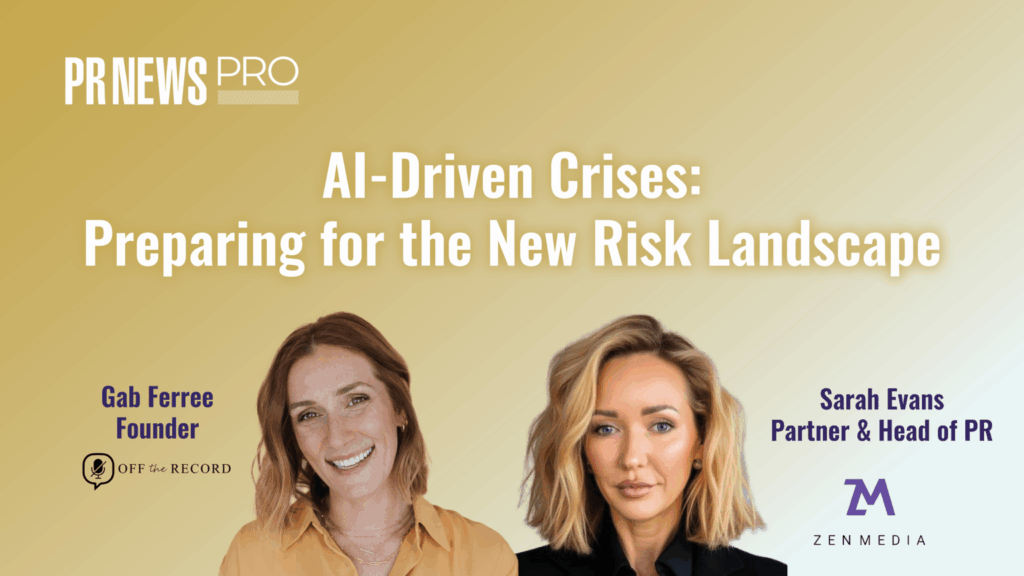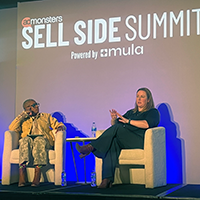Podcasting has finally come of age in the world of business-to-business marketing. A growing number of firms have adopted podcasts as a way to inform and educate their target audience, strengthen their brand, and promote their products and services.
Most commonly, these marketers have made podcasts available through their Web sites, but progressive companies are now finding new and innovative ways to leverage the power of the podcast. The latest trend is to include them in e-newsletters as a way to extend distribution to a broader audience and measure consumption.
Why is podcast popularity soaring in B2B marketing? In a business environment where people at all levels are suffering from information overload, podcasts provide an effective way to cut through the clutter and get your message across to prospective buyers. Business people are inundated with text-based communications—email, instant messages, web feeds, snail mail, and more—and find it increasingly difficult to determine what content is most worthy of their limited time and attention. Podcasts provide an engaging alternative to standard text communications. For example, many business people would prefer listening to a topical audio interview with an industry expert over reading a lengthy white paper on the same topic. It’s simply a more provocative—and often more entertaining—way to acquire information.
Podcasting not only provides an engaging way for your customers and prospects to obtain pertinent content, but it gives them the freedom to choose when, where, and how they listen to it. Indeed, podcasts are a remarkably good fit for today’s multi-tasking business people. They can play a podcast in the background while they do other work on their computers. Alternatively, they can download the podcast to a portable MP3 player and listen to it at their convenience—on the commuter train, at the gym, or at home. In addition, because podcasts are easy to produce and require only minimal hardware and software investments, they are a cost-effective way for B2B marketers to communicate key messages and enhance brand perception.
With podcasting popularity at an all-time high, it’s not surprising that B2B marketers are excited about podcasting in e-newsletters for increasing brand awareness, generating leads, and building stronger relationships. As a push medium, e-newsletters are a more effective vehicle for distributing podcasts than corporate websites. Although there’s a possibility that members of your target audience might come across your podcast if they’re browsing through your site, wouldn’t it be more effective to email the podcast directly to your subscriber list as part of your e-newsletter? This way, all subscribers have to do is click on a link in the e-newsletter and play the podcast using whatever MP3 software (Windows Media Player, QuickTime, iTunes, etc.) is configured on their computer.
Podcasts also provide a unique opportunity to connect more personally with clients and prospects. For example, instead of including a written letter from the editor in your e-newsletter, you could convey the same message in a podcast to create a personal interaction between the editor and your subscribers. In fact, virtually any e-newsletter content that can be presented in a Q&A format is ideal for a podcast. Why? Podcasting lets you convey information in a friendly, relaxed, and inviting way. It gives you the opportunity to let the presenter’s personality shine through, draw in the audience, and lay the groundwork for future interactions. Podcasts work well in conjunction with blogs, too. Your podcast can direct customers and prospects to blogs to encourage ongoing dialogue with your company.
From a sales development perspective, podcasts provide a way for salespeople to get more time—albeit virtually—with promising prospects for the purpose of pushing them further along in the sales cycle. As with any communications medium, there are rules of etiquette associated with podcasting. You should avoid engaging your audience for longer than fifteen to thirty minutes, and if a podcast is well executed, that timeframe should be more than adequate. It’s also important to keep the podcast more informational than promotional to avoid the risk of turning off listeners or losing credibility.
Best of all, sophisticated e-newsletter services use analytics to track podcast consumption and provide you with detailed reports. If your e-newsletter service provider has the right tools in place, podcasting is trackable just like all subscriber activity. You can monitor which subscribers listened to your podcast, and even identify which ones passed it along to others. By tracking podcast listenership, you gain valuable insight into subscribers’ interests. This enables you to customize future marketing activities in order to give each audience segment more of the content they like and build stronger relationships—and brand loyalty—over time.
Podcasts can help B2B marketers across a broad spectrum of industries make their e-newsletter an even more effective marketing tool. My firm observed the growing popularity of podcasts among e-newsletter subscribers. In tracking content popularity for the October 2005 issue of our e-newsletter, we noticed that the combined total for the podcast and the transcript of the podcast was about 225% more popular than any other text-only article. Clearly, podcasting is gaining significant traction among e-newsletter subscribers as a preferred medium for receiving content of interest. To that end, if you’re a B2B marketer looking for a smart, innovative way to cut through the clutter and more effectively reach your target audience, podcasting in your e-newsletter is a powerful way to make yourself heard.
David A. Fish is CEO of IMN (www.imninc.com), a provider of e-communications services such as e-newsletters.



